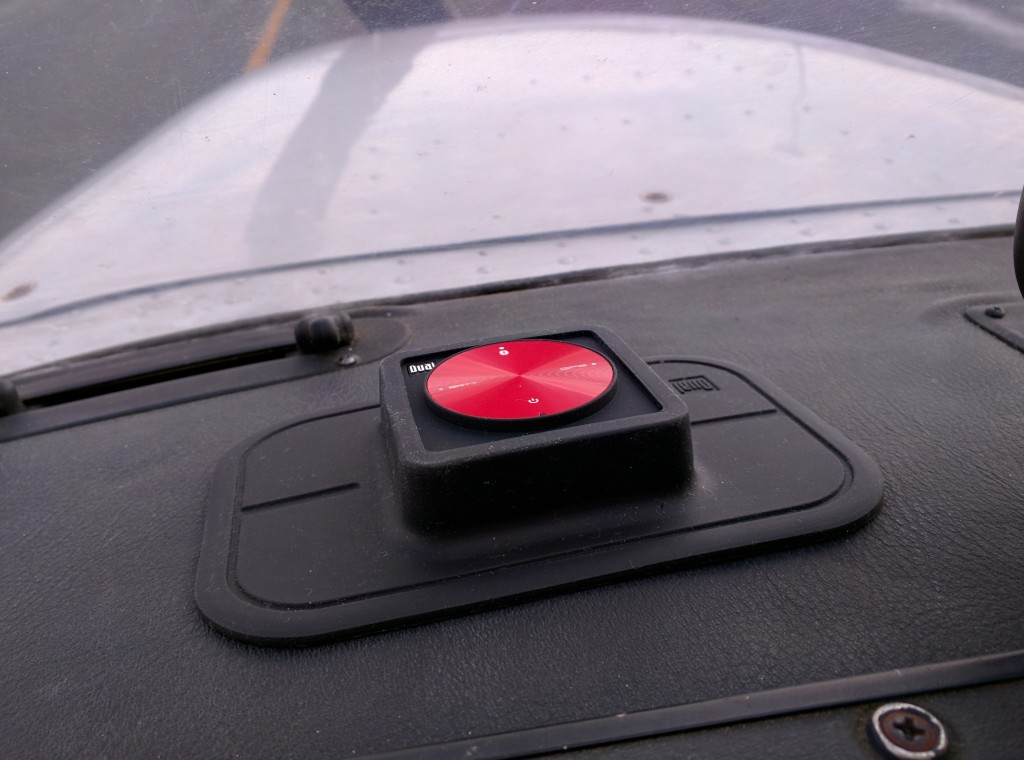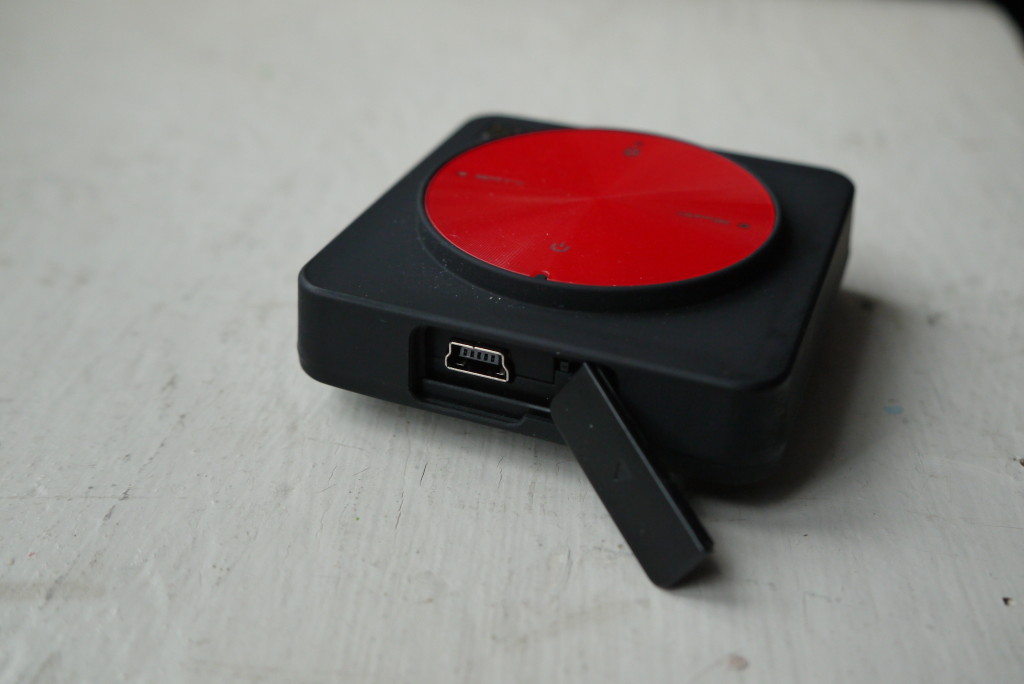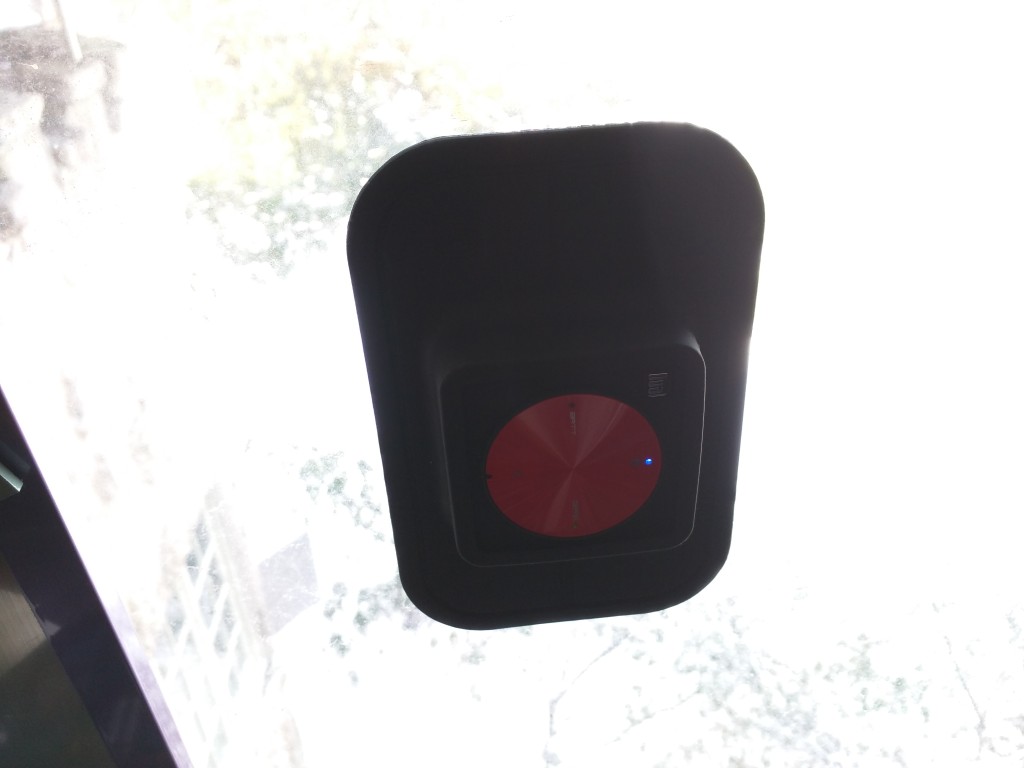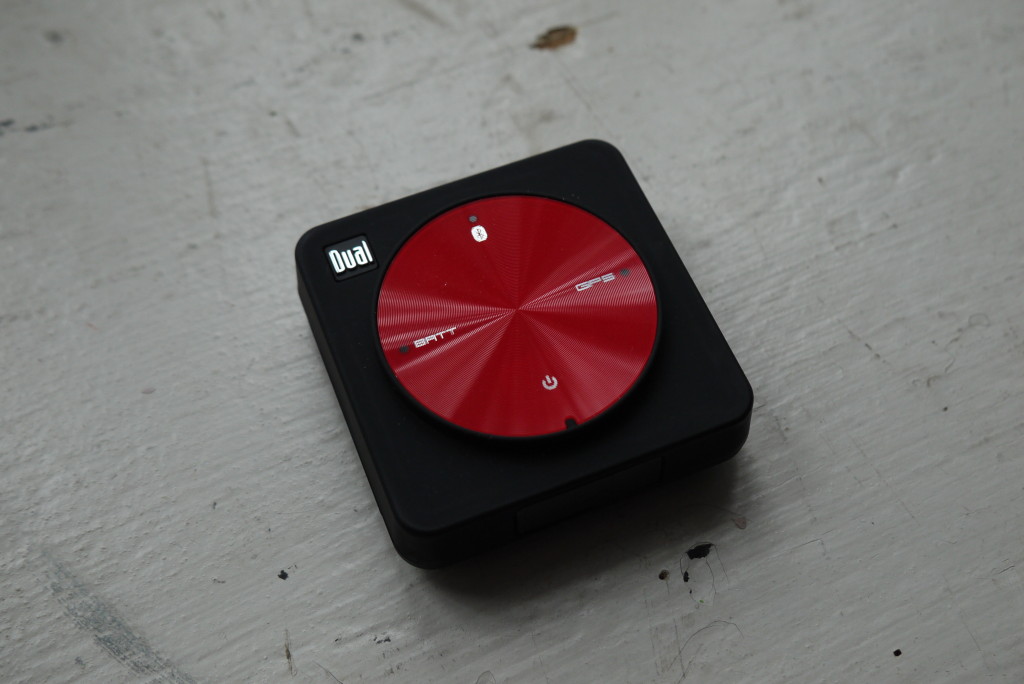I love high-wing airplanes. They give a great view of the outside world, and are very easy to fly and land. But there’s a problem with high-wing planes that low-wing planes don’t experience: the GPS signals are blocked in the cockpit. Because the wing spars are above your head, simply holding a GPS in your lap isn’t going to cut the mustard. You need a remote GPS device somewhere with a clear view of the sky, linked to your electronic flight bag of choice. One solution: the Dual Electronics XGPS150A.
I started running into this problem during training. I loved the ability to use Garmin Pilot during my cross country trips, but with my tablet on my knee I couldn’t get a reliable GPS signal. The metal over my head blocked all of the signals, and I couldn’t get a fix. It was still OK for reference, but to take full advantage of the “own ship position” features I needed GPS connectivity. I looked online, and while Garmin offers a similar product it is hundreds of dollars extra. The Dual Electronics version only costs a cool $100.
The design is minimalist — the XGPS150A is a brownie-shaped piece of square plastic that has only about three buttons. Up top are two of those buttons: a “power” button and a “Bluetooth” button to allow for pairing the GPS to your device of choice. When powered on, a series of status LED indicators lets you know what the device is up to and if it has a GPS fix. Around the back of the device is a belt loop that allows you to strap it to something like your arm. Or, alternatively, there’s a non-slip pad that comes with the device that allows you to throw it up on the glare shield of the plane where there’s plenty of visibility to pick up a GPS signal or stick to a window using static electricity. No, seriously.
One of those buttons is actually a switch, but it is very important: it allows the device to connect to both Apple and Android devices equally well. The two systems aren’t identical, so you’ll need to tell the device which kind of operating system you’re using so it can speak the same language. Its a simple solution to an annoying problem, and makes the device very useful. The switch is located under a small flap, right next to the USB charging port.
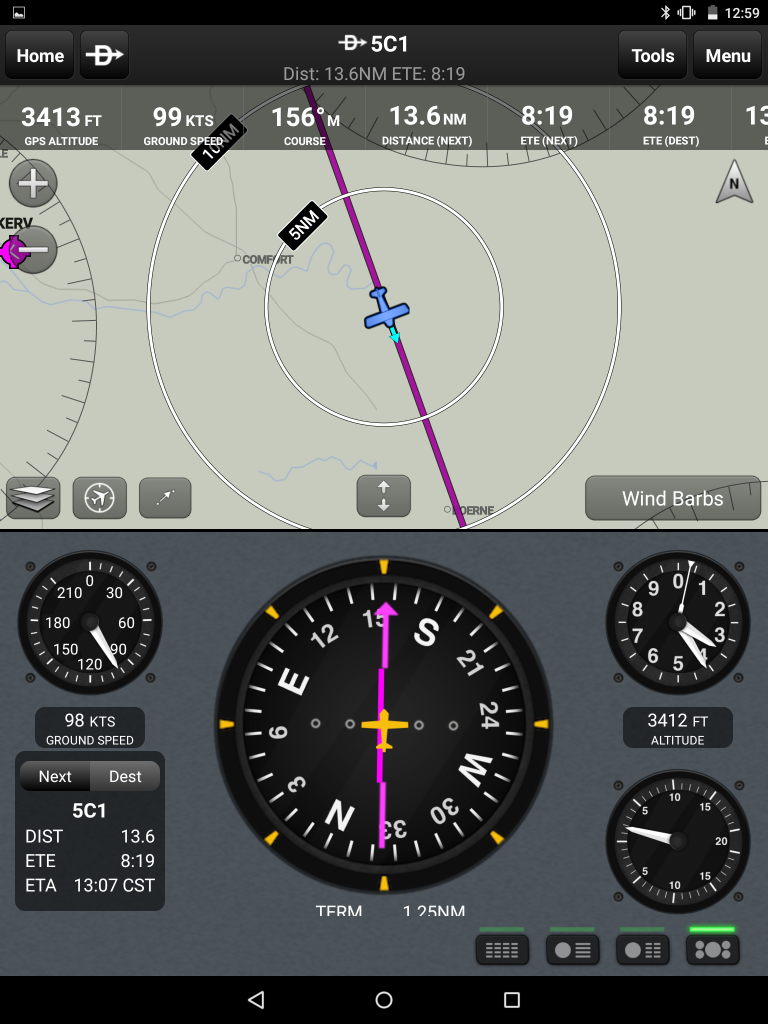
When paired with your electronic flight bag, the device works great and very accurately depicts your position. The device uses the WAAS system to correct for satellite drift and atmospheric conditions and provide an extremely accurate position fix, but does not have a feature to monitor for RAIM (another on the long list of reasons why you can’t pop it on the glare shield and advertise your flight as /G). So while the device will give you an accurate fix, it isn’t necessarily accurate or reliable enough to use it as the sole navigation device.
Another problem keeping it from being hyper-accurate: the refresh rate. The device advertises that it refreshes “at least once per second” which might seem quick on the ground or if you’re running, but up in the air a second is a long time. In a standard rate turn, the refresh rate isn’t quick enough to properly time a roll-out using the GPS’ HSI — it just lags way too much. For maintaining your track and double-checking your heading it is solid, but the slow refresh rate is an issue if you want to try and use it as a backup navigation tool.
That said, as a reference for VFR flying (or even as a situational awareness tool for IFR flying) the GPS is pretty much ideal. The device advertises a useful battery life of 8 hours, 6 of which I have confirmed both on the ground and in the air. I’ve used this for every flight I have taken since getting my pilot’s certificate and haven’t experienced a single issue with the device. It always remains connected, and the non-slip pad has kept it in place even during steep turns and stalls.
The only bad reports I’ve seen about this device are from jet pilots. Apparently at high speeds and high altitudes, the device doesn’t work as well or at all. I cannot independently verify this, but if you’re burning Jet-A instead of 100LL then you might want to consider not cheaping out on your GPS equipment.
There’s a lot of features that this GPS doesn’t have. There’s no route recording function like the big brother XGPS160. It can only connect to one Bluetooth device at a time. And there’s no GLONASS reception for our Russkie friends. All these are features that either the XGPS160 or the Bad Elf 2200 can provide (the Bad Elf 2200 even has a GPS location LCD display) but they both cost 50% more. If you’re looking for some basic remote GPS connectivity at a reasonable price, then this does the trick.
Specifications: Dual Electronics XGPS150A Bluetooth GPS
GPS: WAAS Equipped
GLONASS: Not Available
Connected Devices: 1
Battery Life: 8 hours (6 confirmed)
MSRP: $99.99 (Amazon)
OVERALL: * * * * (4/5)
The laggy position reporting is an issue, but not enough to override the overall benefit. For a single pilot VFR in a Cessna 172 just trying to get their EFB to work properly, this is pretty much ideal. There are some features I would love to see, but at this price I’m not complaining. Much.
